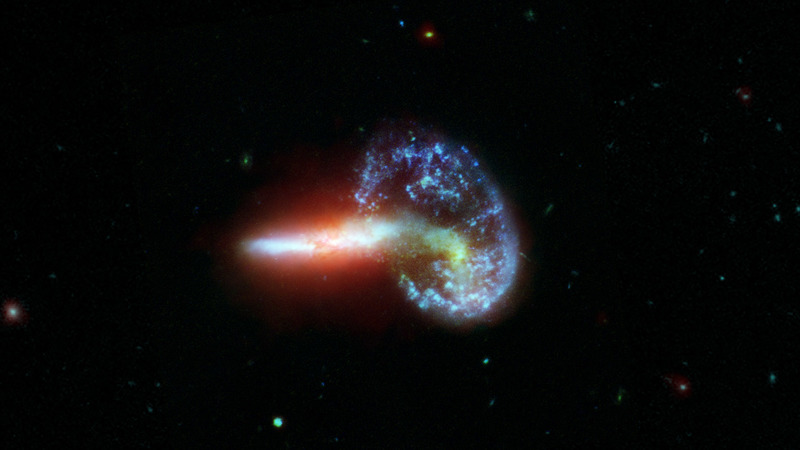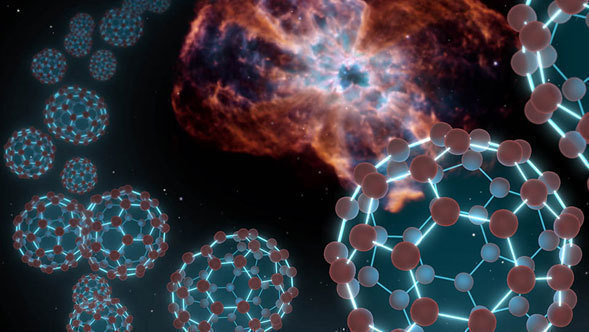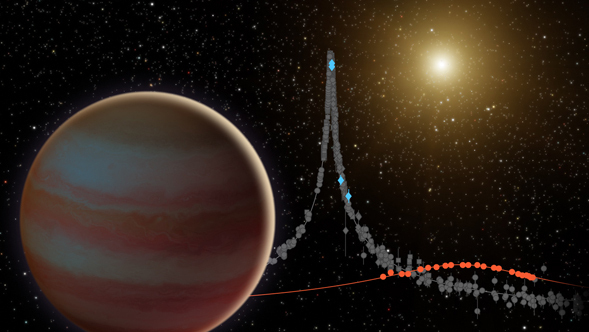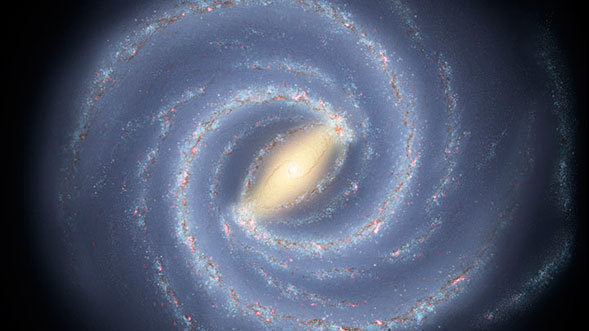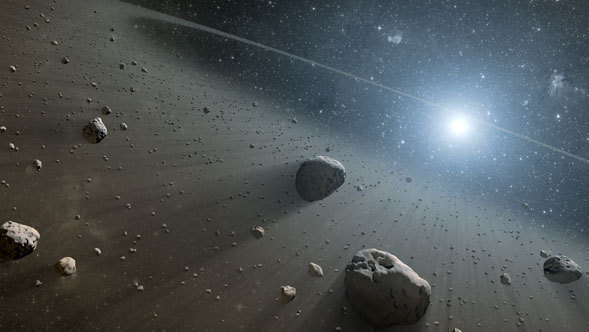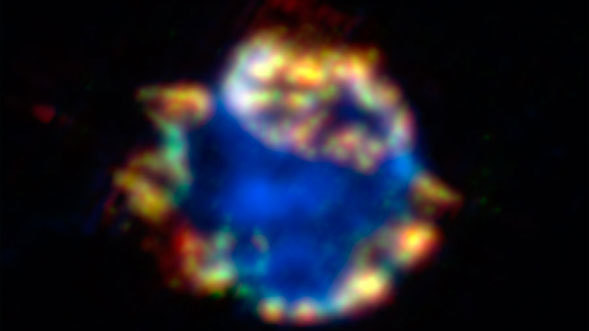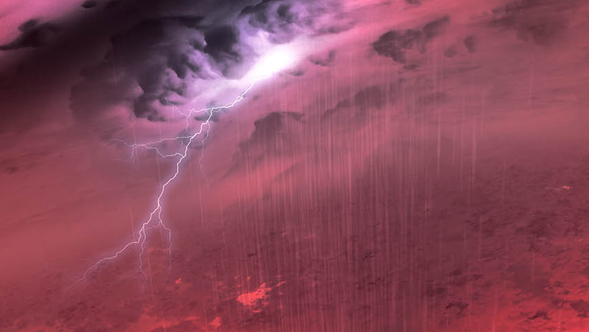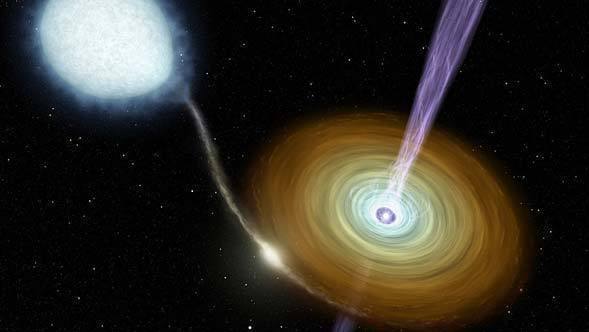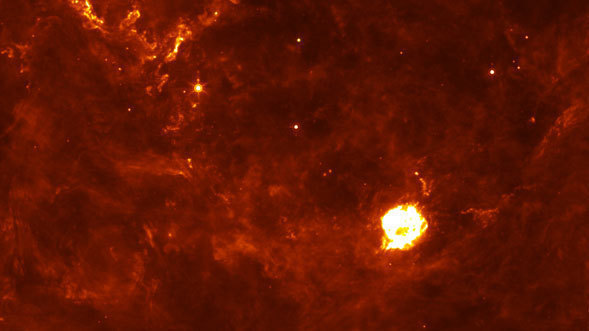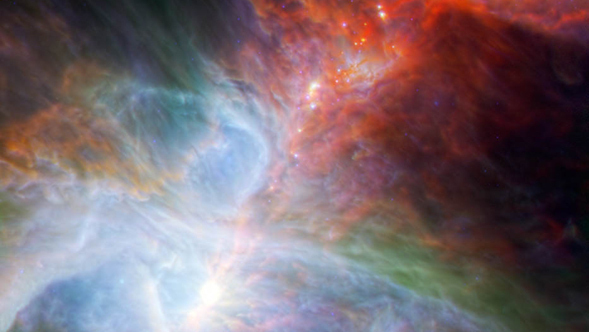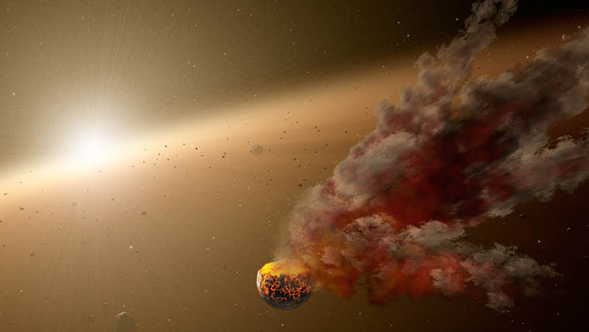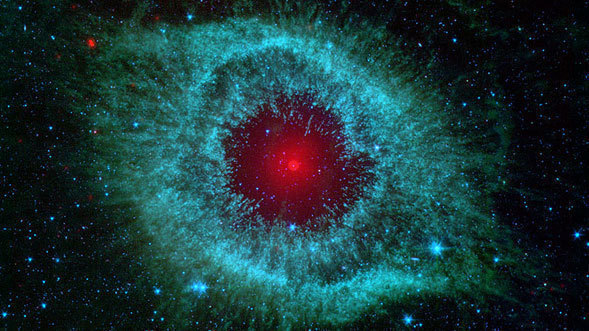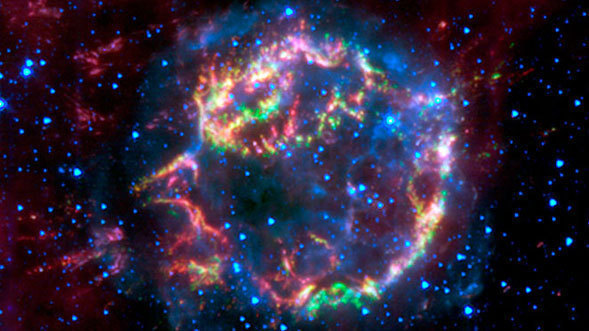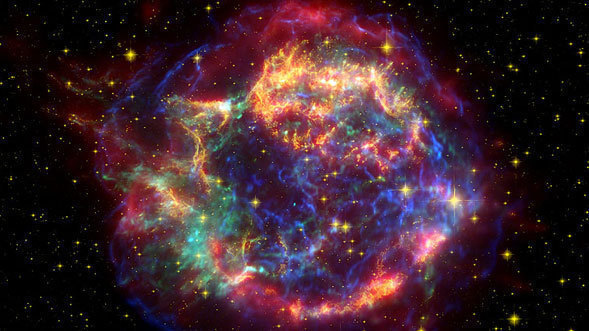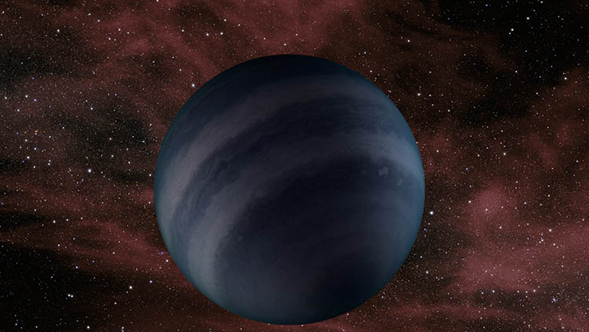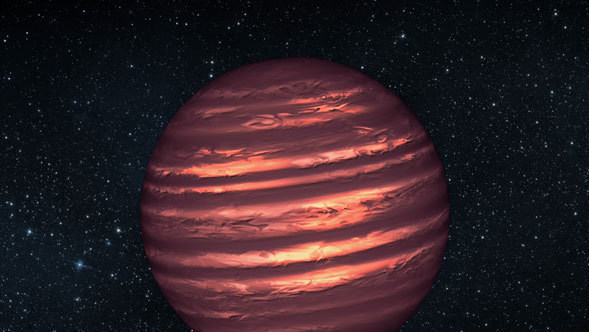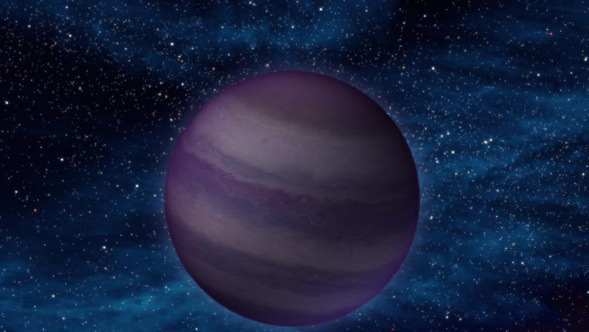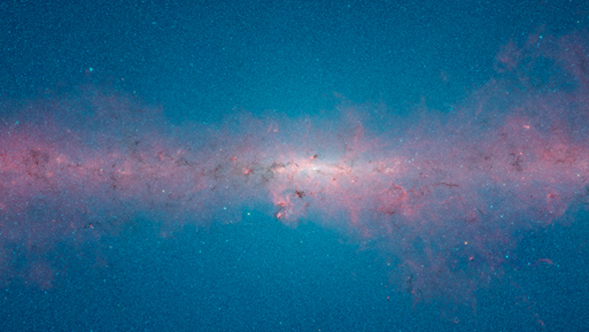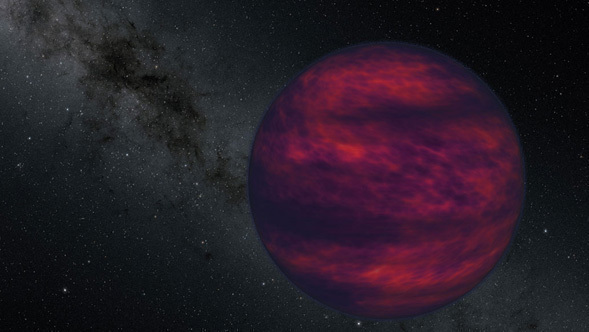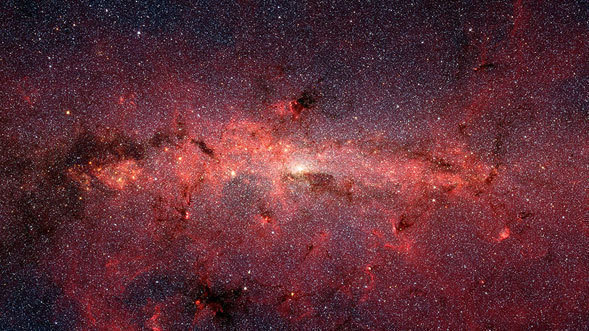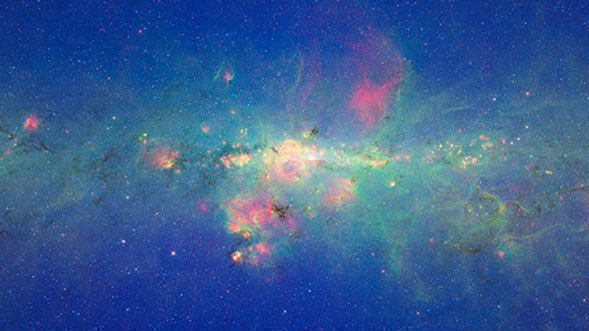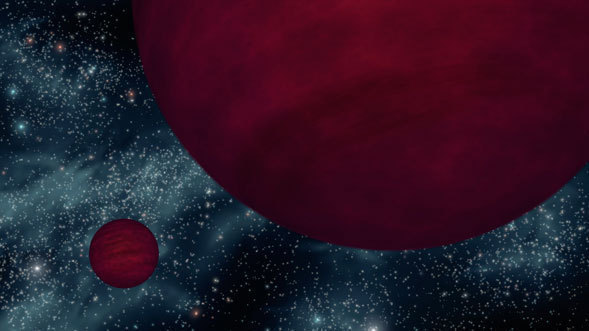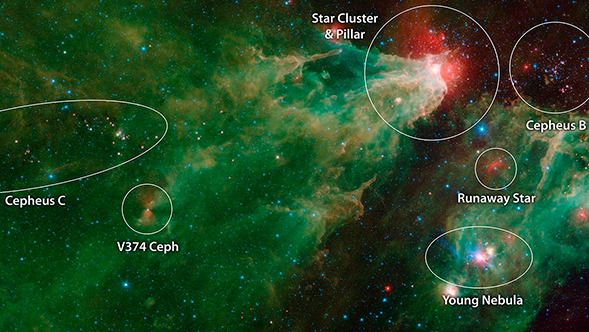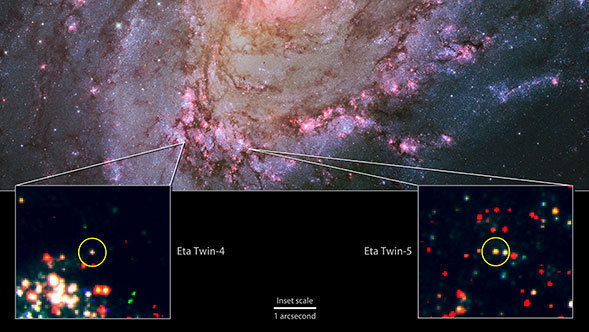Astronomy, as it name implies, is involved in the study of stars since the ancient times. The best place to find out more about these mysterious beacons of light in the sky is outside Earth's atmosphere. Further, investigating the stars is done at infrared wavelengths, where the dimming due to dust and gas surrounding the stars is minimized. The whole lifecycle of stars from birth to death is thus revealed with an infrared space telescope, such as Spitzer.
Closely connected to stars are gas and dust nebulae that often cover vast spaces between and around stars. These nebulae provide the raw material for the formation of future stars on one hand, but on the other hand they themselves consist of the remains of previous generations of stars that have blown themselves up either peacefully or in a violent manner.
Spitzer's observations have revealed previously unknown material in the interstellar space, including giant buckyball-like molecules and jets around dense stars. Spitzer has for the first time unearthed weather conditions on failed stars called brown dwarfs, pointed out hidden places of star formation in dusty interstellar cocoons, and discovered dusty relics of ancient stellar deaths.
Exploding stars generate dramatic light shows. Infrared telescopes like Spitzer can see through the haze and to give a better idea of how often these explosions occur.
Astronomers using NASA's Spitzer Space Telescope have discovered carbon molecules, known as "buckyballs," in space for the first time. Buckyballs are soccer-ball-shaped molecules that were first observed in a laboratory 25 years ago.
In a first-of-its-kind collaboration, NASA's Spitzer and Swift space telescopes joined forces to observe a microlensing event, when a distant star brightens due to the gravitational field of at least one foreground cosmic object.
New images from NASA's Spitzer Space Telescope are shedding light on the true structure of the Milky Way, revealing that it has just two major arms of stars instead of the four it was previously thought to possess.
Astronomers have discovered what appears to be a large asteroid belt around the star Vega, the second brightest star in northern night skies.
Astronomers have at last found definitive evidence that the universe's first dust -- the celestial stuff that seeded future generations of stars and planets -- was forged in the explosions of massive stars.
To the surprise of astronomers, most brown dwarfs may be roiled by massive storms.
One of the most mysterious aspects of black holes is their ability to shoot small, steady jets of matter into space near the speed of light. Until the sensitive infrared eyes of NASA's Spitzer Space Telescope recently spotted one of these jets around a nearby neutron star, or super-dense dead star, black holes were the only known objects in the universe with this "talent."
Hot spots near the shattered remains of an exploded star are echoing the blast's first moments, say scientists using data from NASA's Spitzer Space Telescope.
Astronomers have spotted young stars in the Orion nebula changing right before their eyes, thanks to the European Space Agency's Herschel Space Observatory and NASA's Spitzer Space Telescope. The colorful specks -- developing stars strung across this image -- are rapidly heating up and cooling down, speaking to the turbulent, rough-and-tumble process of reaching full stellar adulthood.
NASA's Spitzer Space Telescope has spotted an eruption of dust around a young star, possibly the result of a smashup between large asteroids. This type of collision can eventually lead to the formation of planets.
A bunch of rowdy comets are colliding and kicking up dust around a dead star, according to new observations from NASA's Spitzer Space Telescope. The dead star lies at the center of the much-photographed Helix nebula, a shimmering cloud of gas with an eerie resemblance to a giant eye.
Astronomers using NASA's infrared Spitzer Space Telescope have discovered that an exploded star, named Cassiopeia A, blew up in a somewhat orderly fashion, retaining much of its original onion-like layering.
An enormous light echo etched in the sky by a fitful dead star was spotted by the infrared eyes of NASA's Spitzer Space Telescope.
NASA's Spitzer Space Telescope has found evidence of a high-speed collision between two burgeoning planets around a young star.
Researchers are getting to know some of our sun's closest and smallest neighbors.
Astronomers using NASA's Spitzer and Hubble space telescopes have probed the stormy atmosphere of a brown dwarf, creating the most detailed "weather map" yet for this class of cool, star-like orbs. The forecast shows wind-driven, planet-sized clouds enshrouding these strange worlds.
Although we all want to think that the people we keep company with are "cool," when it comes to the cosmos, no one has a cooler companion than a star known as WD 0806-661.
Touring the Milky Way now is as easy as clicking a button with NASA's new zoomable, 360-degree mosaic presented Thursday at the TED 2014 Conference in Vancouver, Canada.
For the first time, scientists have directly measured wind speed on a brown dwarf, an object larger than Jupiter (the largest planet in our solar system) but not quite massive enough to become a star. To achieve the finding, they used a new method that could also be applied to learn about the atmospheres of gas-dominated planets outside our solar system.
A new infrared mosaic from NASA's Spitzer Space Telescope offers a stunning view of the stellar hustle and bustle that takes place at our Milky Way galaxy's center. The picture shows throngs of mostly old stars, on the order of hundreds of thousands, amid fantastically detailed clouds of glowing dust lit up by younger, massive stars.
More than 800,000 snapshots from NASA's Spitzer Space Telescope have been stitched together to create a new "coming of age" portrait of stars in our inner Milky Way galaxy.
It's a tie! The new record-holder for dimmest known star-like object in the universe goes to twin "failed" stars, or brown dwarfs, each of which shines feebly with only one millionth the light of our sun.
The evolution of stellar families - born from the same clumps of gas and dust - is just some of what's on display in this sweeping image.
A new study has found five objects with similar properties to the most luminous and massive stellar system within 10,000 light-years of Earth.
Astronomers have discovered what appears to be a tiny star with a giant, cloudy storm, using data from NASA's Spitzer and Kepler space telescopes. The dark storm is akin to Jupiter's Great Red Spot: a persistent, raging storm larger than Earth.
A star called KIC 8462852 has been in the news recently for unexplained and bizarre behavior. New clues emerge in the mystery of a star with odd light patterns.
A new image containing data from NASA's Spitzer and Chandra space telescopes shows a cluster of young stars expected to burn for billions of years.
As NASA missions explore our solar system and search for new worlds, they are finding water in surprising places. Water is but one piece of our search for habitable planets and life beyond Earth, yet it links many seemingly unrelated worlds in surprising ways.
A sudden eruption around an exceptionally young star surprises astronomers. Using data from orbiting observatories, including NASA's Spitzer Space Telescope, and from ground-based facilities, an international team of astronomers has discovered an outburst from a star thought to be in the earliest phase of its development.
"Hmm, what's that?" Simply by asking the question, volunteers have led researchers to illuminate a little-known stage of massive star formation.
Sometimes a horse of a different color hardly seems to be a horse at all, as, for example, in this newly released image from NASA's Spitzer Space Telescope. The famous Horsehead nebula makes a ghostly appearance on the far right side of the image, but is almost unrecognizable in this infrared view.
There were no witnesses to a stellar blast that lit up our skies a millennium ago, but NASA's Spitzer Space Telescope is finding clues in the charred remains.
The dark patch of clouds in this image from NASA's Spitzer Space Telescope is swaddled in so much dust, even infrared light is blocked.
